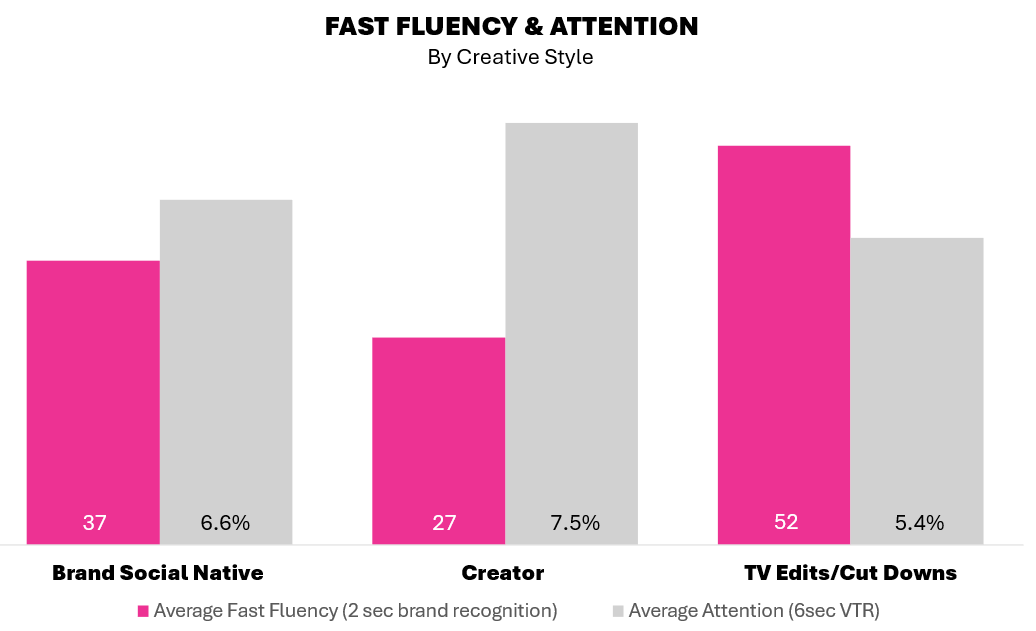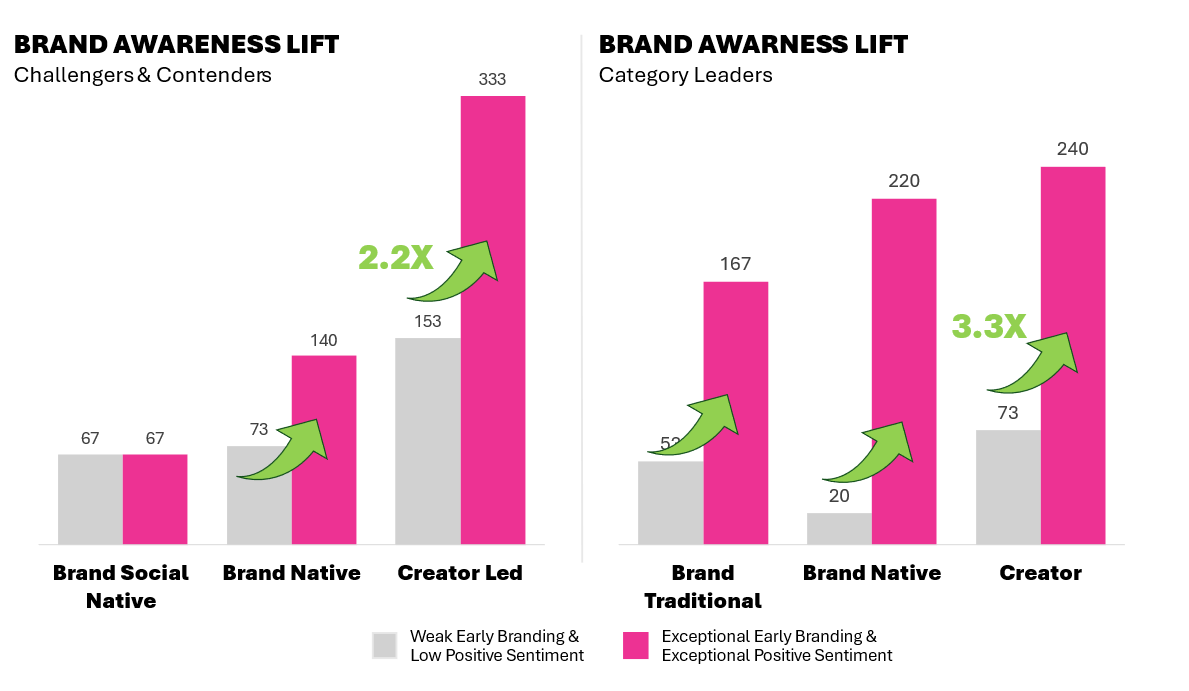Have You Been Influencer-ed?
Influencer marketing, once seen as an experimental social tactic, has evolved into a proven and measurable growth channel. As audiences increasingly discover and evaluate brands through YouTube, TikTok, Instagram, and Pinterest, marketers have learned that presence on these platforms is no longer optional. Consumers now expect to see brands show up in authentic, human, and relatable ways.
Among younger audiences, influence is already shaping the path to purchase. Research shows that 57% of Gen Z learn about new brands, products, and experiences on YouTube, while 53% do so on TikTok. This means that for many consumers, the first impression of a brand happens through creators, not traditional ads.
For brands, this presents both a challenge and an opportunity. The challenge lies in cutting through the noise and selecting partnerships that deliver real business impact. The opportunity comes from leveraging data, strategic alignment, and long-term creator relationships to build brand equity and drive measurable ROI. When executed with the right strategy and analytics, influencer marketing is not a gamble, but a powerful complement to the modern marketing mix.
In fact, if you need any more convincing about the power of influencers, look no further than new IPA research showcasing that creators drive strong ROI in the short term. Plus, System1 and Effie’s forthcoming report, The Creative Dividend, finds that creators are exceptional at the long too, even topping TV!

Influencing the C-Suite on Your Influencer Strategy
The commercial impact of influencer marketing can be difficult to track and attribute. Many brands invest in multiple creators across regions, each with different audiences, promoting different products in their own unique style. Despite this complexity, evidence shows that influencer marketing can deliver strong results when managed strategically. From challenger brands like Glossier to global leaders such as Coca-Cola, it has become a trusted and proven part of the modern marketing toolkit.
Consider prebiotic soda brand Poppi. At The Cannes Lions International Festival of Creativity this year, System1’s Chief Customer Officer Jon Evans joined social media star Alix Earle to discuss how influencer partnerships helped shape Poppi’s rapid growth. Accelerated by the COVID-19 pandemic, Poppi increased its investment in influencer marketing to reach consumers at home. The brand later brought Alix Earle on board in 2022 as both an influencer and an investor. While Poppi’s success cannot be attributed solely to its influencer strategy, there is a clear link between the brand’s growth and its consistent investment in creator-led campaigns, including its high-impact Coachella content.
When influencer programs are supported by strong creative, data-informed decisions, and clear commercial goals, they become more than a marketing experiment. They become a measurable growth engine that connects brands to audiences with authenticity and trust.

For us at System1, this finding was not surprising. In our recent study with TikTok, The Long & The Short (Form) of It, we discovered that creator content captures significantly more attention than brand native content built for these platforms or TV cutdowns. For brands seeking to increase awareness and engagement, partnering with influencers is one of the most effective ways to attract and hold audience attention.
Low Fluency: An Effectiveness Red Flag 🚩

However, our research also revealed an important challenge. While influencer content is highly effective at capturing attention, only 27% of viewers recognize which brand the content is for within the first two seconds, the average time a social ad has to make an impression. This means that 73% of viewers may scroll past without recalling your brand. Figures like these highlight the risk of investing in influencer activity without a strong creative or branding strategy in place.
This is where brands like Poppi stand out. Their approach to influencer partnerships demonstrates how consistency, clarity, and creativity can turn engagement into growth. While influencer marketing can be difficult to attribute, it is far from impossible to measure and optimize.
The first principle is ownership: you are the brand, and influencers are collaborators. Set clear guardrails and expectations before content creation begins. Our research found that well-branded creator content delivers 2.3 times more Brand Awareness lift and three times more Brand Image lift, both essential drivers of long-term growth. Successful examples often feature natural brand integration, such as a tube of Maybelline mascara in a makeup tutorial, Adidas shoes in a “Get Ready with Me,” or a Poppi soda in a casual dining moment. The more distinctive the branding, the greater the impact. If your product does not naturally fit into an influencer’s content, they may not be the right partner for your campaign.

Let’s Get Emotional
Stage two is ensuring that the content truly resonates. When brands combine strong emotional appeal with clear branding, they create influencer campaigns that not only capture attention but also drive measurable growth. Our data shows that pairing positive emotions such as happiness and surprise with well-branded creative consistently lifts brand awareness, whether the brand is a challenger or a category leader. In simple terms: distinctiveness plus positive emotion equals influencer content with impact.
Elements such as humor, dialogue, storytelling, music, and a clear sense of place help build emotional connections with audiences. Align closely with your creators and make sure they understand your objectives in terms of emotional response and brand outcomes. Over time, this alignment leads to stronger resonance and lasting results.
The best part is that you can test and refine your approach. With System1’s Test Your Ad: Social, brands can analyze content performance before going live, identify which distinctive brand codes work best, and understand which emotional triggers drive the strongest response. This not only helps optimize creative effectiveness but also gives marketers the evidence they need to demonstrate value and build confidence in the boardroom.

What Does This Look Like?
Telling a brand to “be distinctive” or “positive” can sound a little abstract, so let’s unpack what that really means in practice. Being well-branded or distinctive doesn’t simply mean putting a logo front and center. Many marketers and creative agencies are skeptical of this approach, believing that early branding risks an emotional trade-off, and they are often right. But it doesn’t have to be that way.
Distinctive assets come in many forms, and some are not only powerful drivers of brand recall but also enhance emotional impact. Think sonic cues like trending music, recognizable brand characters such as Labubu, catchy jingles or slogans like the unforgettable Jet2 Holidays, or products and logos that appear naturally within content, such as in a “What’s in my bag” video. These techniques avoid static logo placements and ensure that branding feels authentic and integrated.
There is one caveat: overdo it, and you risk undermining the impact. In the case of distinctive assets, less is more. Our data shows that using four distinctive assets within the first two seconds is the optimal number for capturing and sustaining audience attention.
The good news is that when influencers promote your brand creatively, they often bring assets associated with positive emotions to life naturally. Their content tends to include storytelling, a sense of place, humor, and music, all proven ingredients for building positive emotional connections.
So, what does this look like in action? Below are some standout examples that show how brands can use influencer collaborations strategically to drive both attention and lasting brand impact.
Have You Been Influenced?
Ready to unlock the full power of influencer marketing and see measurable short- and long-term impact? Connect with the team at System1. We help brands optimize everything from TV to social content through our Test Your Ad platform.
Using our proven methodology, we identify the emotional drivers that fuel effectiveness, uncover which brand codes are most likely to be remembered, and determine which influencers are the best fit for your brand.
Get in touch with the System1 team today and Create with Confidence.

